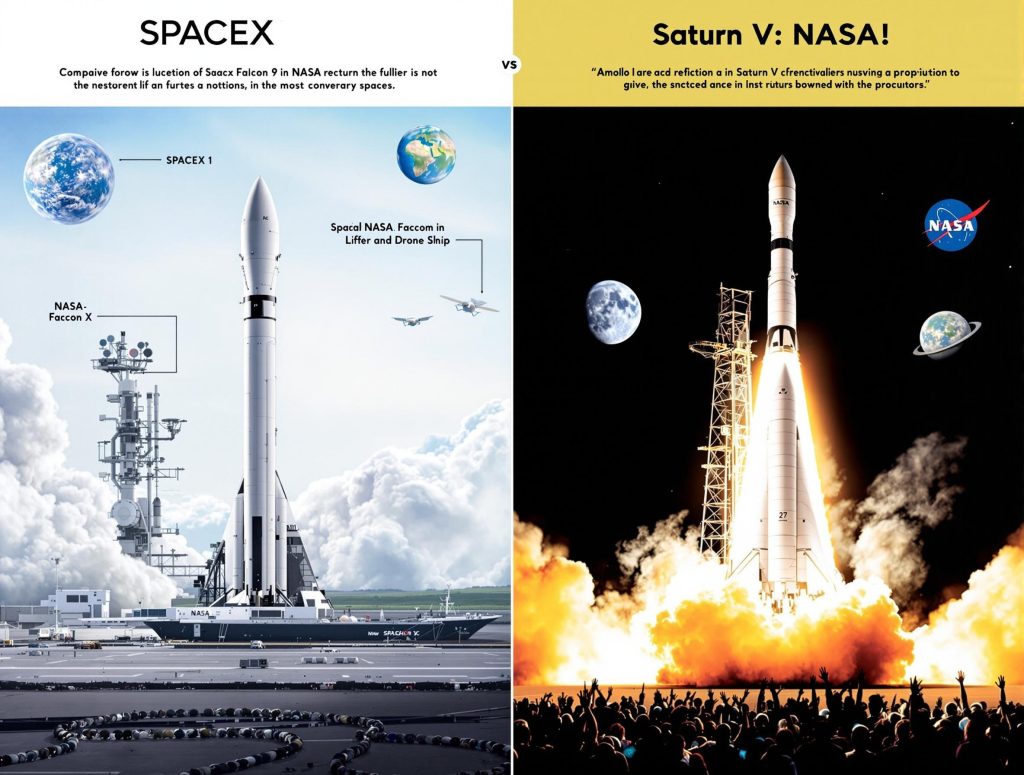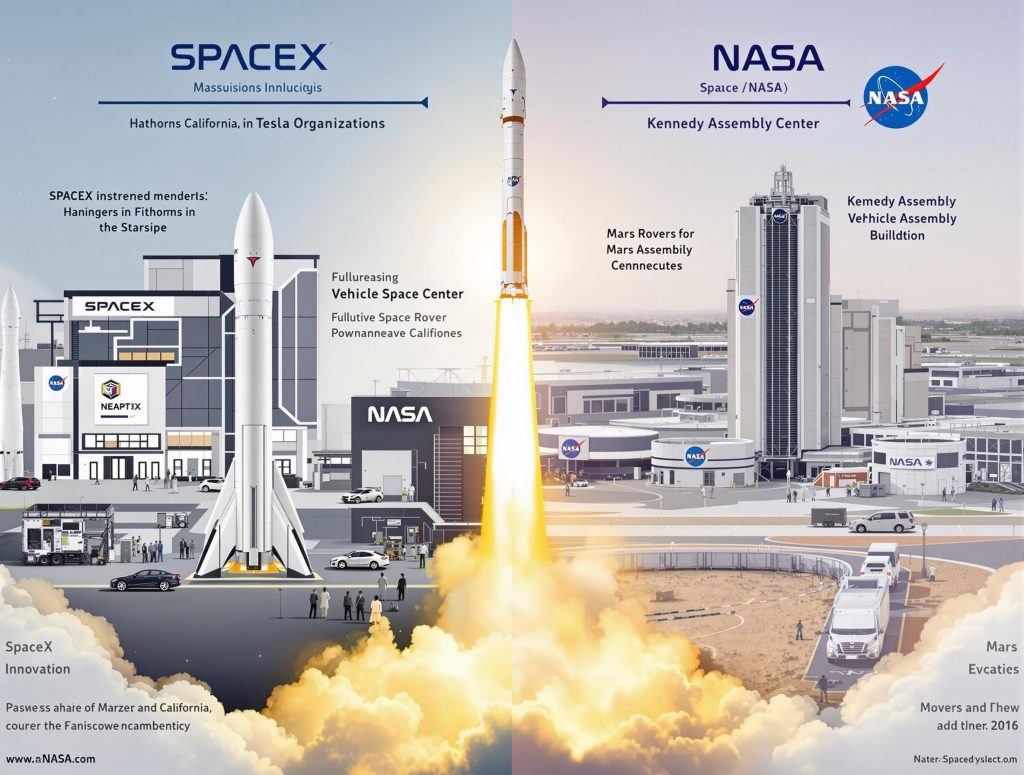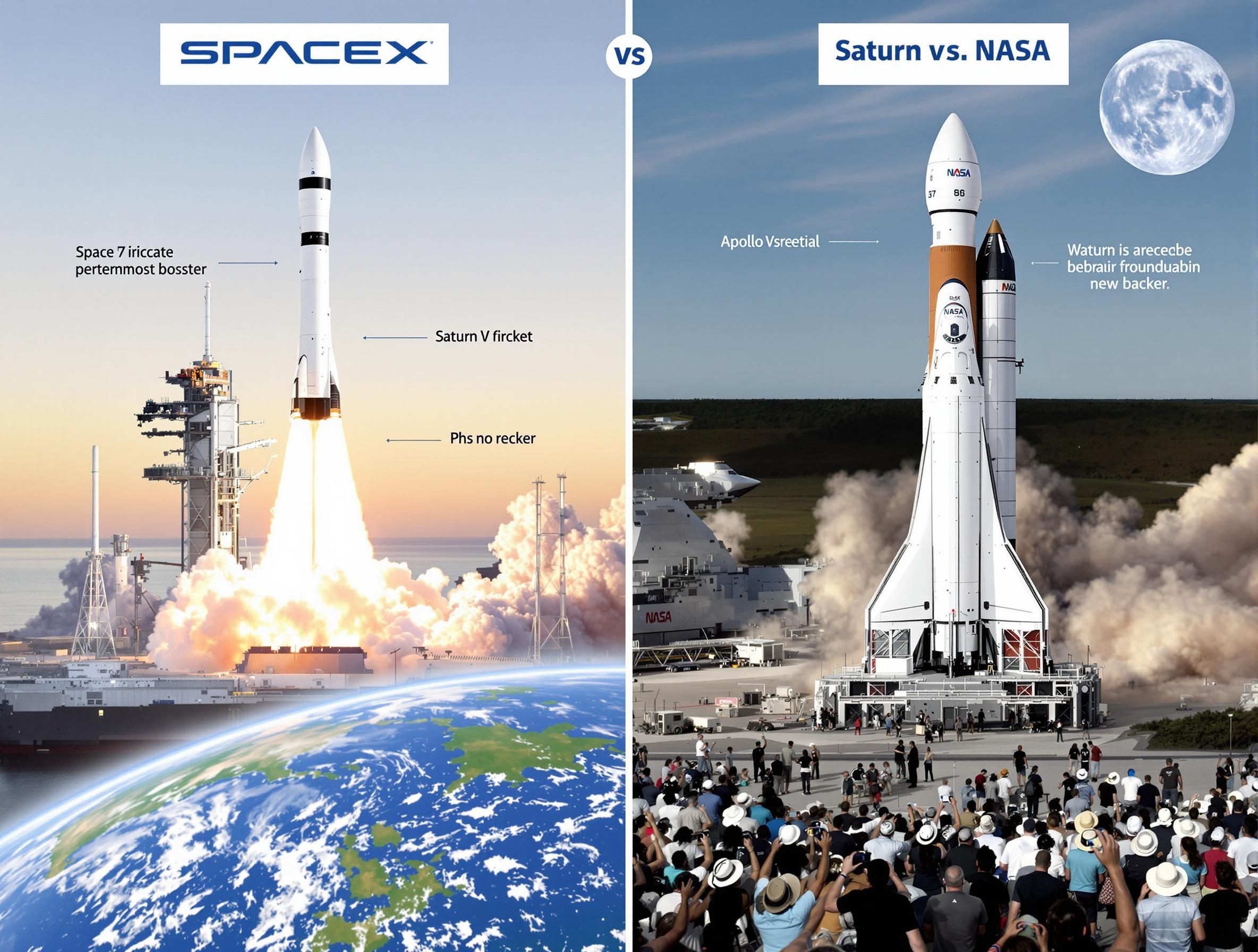Space exploration has always captured the human imagination, and today, two key players dominate the conversation: SpaceX Compare to NASA , While NASA (National Aeronautics and Space Administration) has been a cornerstone of space exploration since its establishment in 1958, SpaceX (Space Exploration Technologies Corp.), founded in 2002 by Elon Musk, has brought commercial innovation into the mix. This article provides a detailed breakdown of how SpaceX compares to NASA across several key dimensions. stay with Spaceyv
Mission and Vision SpaceX Compare to NASA
NASA:
As a U.S. government agency, NASA’s mission is broad and multifaceted, focusing on scientific discovery, technological innovation, human spaceflight, and planetary exploration. Its vision is to “reach for new heights and reveal the unknown for the benefit of humankind.” NASA’s goals often include long-term objectives, such as Mars exploration, understanding Earth’s climate, and studying the universe through telescopes like the James Webb Space Telescope.
SpaceX:
SpaceX, a private company, aims to revolutionize space transportation and make life multi-planetary. Its primary goal is to reduce the cost of space travel through innovations like reusable rockets, with an ultimate vision of establishing a human settlement on Mars. SpaceX’s focus is more commercially driven, aiming to support industries like satellite deployment, space tourism, and interplanetary colonization.

Funding SpaceX Compare to NASA
NASA:
NASA is publicly funded through the U.S. federal government. Its annual budget, which fluctuates based on government priorities, was approximately $25.4 billion in 2024. This funding supports a wide array of programs, from planetary science to Earth observation, and ensures international collaboration on space missions.

SpaceX:
SpaceX relies on private investment and revenue from contracts with NASA, commercial satellite operators, and other organizations. Unlike NASA, SpaceX’s funding is tied to market demand for its services, such as satellite launches and crewed missions. Its cost-efficient approach and reusable technology have made it a preferred partner for many.
You can also read : The Future of Space Tourism: What to Expect in the Next Decade
Technological Innovation SpaceX Compare to NASA
NASA:
NASA has been at the forefront of technological breakthroughs for decades. Milestones include the Apollo program, the Space Shuttle, and the Mars rovers. NASA has also developed cutting-edge technologies like ion propulsion, advanced robotics, and space telescopes. These innovations often have spillover effects, benefiting industries on Earth.
SpaceX:
SpaceX has brought disruptive innovation to spaceflight. Its Falcon 9 rocket, the first to feature a reusable first stage, drastically reduced launch costs. The Starship program aims to create fully reusable spacecraft capable of interplanetary travel. SpaceX also developed the Dragon spacecraft, which transports cargo and crew to the International Space Station (ISS). Its rapid development cycles and cost-effective designs set it apart from traditional aerospace players.
You can also read : How to Bend Time : Unlock the 7 Secrets of Time Manipulation!
Achievements SpaceX Compare to NASA
NASA:
- Successfully landed humans on the Moon during the Apollo program.
- Launched and operated the Hubble Space Telescope and James Webb Space Telescope.
- Deployed robotic explorers like the Perseverance rover on Mars.
- Played a key role in the construction and operation of the ISS.
SpaceX:
- First private company to send a spacecraft to the ISS (Dragon in 2012).
- Developed the Falcon 9, the first reusable orbital rocket.
- Successfully launched and returned the Starship prototype.
- Created Starlink, a satellite internet constellation, aiming to provide global internet coverage.
Cost Efficiency
NASA:
As a government agency, NASA operates under stricter procurement rules and oversight, often leading to higher costs. However, its collaborations with private companies like SpaceX have helped reduce expenses in recent years.
SpaceX:
SpaceX’s private-sector model emphasizes cost efficiency. By reusing rockets and vertically integrating manufacturing, the company significantly lowers launch costs. For example, the cost of a Falcon 9 launch is around $67 million—far less than comparable launches by traditional aerospace contractors.
You can also read : Women Who Shaped the History of Space Exploration : Women in Space
Collaboration vs. Competition
NASA and SpaceX are not merely competitors; they are collaborators. NASA contracts SpaceX for missions like resupplying the ISS and launching astronauts under the Commercial Crew Program. However, SpaceX’s ambitions in areas like Mars exploration and satellite deployment sometimes overlap with NASA’s goals, creating a subtle competitive dynamic.
Cultural Impact
NASA:
NASA’s achievements are deeply woven into the fabric of modern history. The Apollo Moon landing, for example, is an iconic moment that inspired generations. NASA’s scientific missions also contribute to our understanding of the universe and Earth.
SpaceX:
SpaceX has revitalized public interest in space with its ambitious goals and dramatic achievements. Live-streamed rocket launches and landings have captivated audiences worldwide, making space exploration feel accessible and exciting.
You can also read : The Science Behind of Shooting Stars and Meteor Showers : 2025 perspective
Future Goals
NASA:
- Return humans to the Moon through the Artemis program.
- Advance Mars exploration with robotic and crewed missions.
- Develop advanced space telescopes and Earth-monitoring satellites.
SpaceX:
- Establish a permanent human presence on Mars.
- Expand the Starlink satellite network.
- Develop fully reusable spacecraft through the Starship program.
- Pioneer space tourism and commercial space ventures.
Conclusion
While NASA and SpaceX have different origins, structures, and objectives, their contributions to space exploration are complementary. NASA’s decades of experience and scientific focus provide a foundation for understanding the cosmos, while SpaceX’s commercial ingenuity drives innovation and accessibility. Together, these entities are reshaping humanity’s relationship with space, proving that collaboration and competition can coexist to push the boundaries of what’s possible.
References
NASA. “About NASA.” Link
SpaceX. “Making Life Multiplanetary.” Link
Outer Space Treaty of 1967. United Nations Office for Outer Space Affairs. Link
Commercial Crew Program. NASA. Link




I’m impressed, I have to admit. Seldom do I come across a blog that’s both educative and interesting, and without a doubt, you’ve hit the nail on the head.
The issue is something which not enough people are
speaking intelligently about. Now i’m very happy that I stumbled across this during my search for something relating to this.